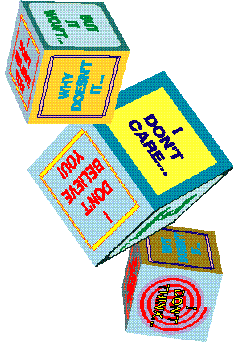Dealing with the drawback... an unmeetable condition.

The toughest objection, even for top salespeople, is the drawback. As we mentioned in the first part of this series, the drawback is an un-meetable condition the customer places on the sale. In furniture sales, that condition is often based on price or date of delivery. For example, the customer says he'll take your dining room set if you can deliver it within two weeks. But the soonest you can deliver the set is 8 to 10 weeks. That's a drawback. Or, say, the customer agrees to purchase your living room set on condition you lower the price. But your store has a no exception policy regarding its fixed prices. That's a drawback. Notice that we are not talking about conditions you can meet by asking the manager's permission to make an exception.
How should salespeople handle the drawback? For several years I have advised my salespeople to first of all acknowledge the reason for the need expressed in the drawback. For example, the customer objects, "But I have to have this set in two weeks. My parents are coming to visit us all the way from Boston to celebrate their golden anniversary. I can't wait any longer than that." The salesperson should acknowledge the concern in the need to have the set in time for that golden anniversary: "I must admit that in your situation I'd want to have the dining room set delivered in time for so important a celebration."
We now come to the critical part. If the salesperson attempts to follow the steps taught in Learning International Inc.'s Professional Selling Skills, that is, "to refocus on the bigger picture" and "outweigh with previously accepted benefits," there is the danger that the salesperson will find himself weighing on two different scales; one emotional, the other rational. Weighed against the emotionally based drawback, the "previously accepted benefits" will be feather-weights by comparison unless the salesperson can return the customer to reason. The following scenario should illustrate what I mean.
Customer: But I've got to have this delivered in time for my parents' golden anniversary. They're coming all the way from Boston.
Salesperson: In your situation my first thoughts would be just like yours. That's a really big event to travel so many miles for. But think of what you said you had to have in your next dining room set: a table with two extensions large enough to seat ten. Also, we do carry the matching server which you said you had to have. Finally, this set does meet the price point you stated. Don't you think it's better to wait eight weeks and get what you really want than to settle for something that's available but doesn't really meet your needs.
Logically, the approach of outweighing the drawback by reminding the customer of previously accepted benefits would seem to make sense. But it forgets to take into account that the drawback is often resting on a highly emotional scale while the so-called previously accepted benefits are resting on a logical scale. The highly emotional need to have the set in time for the parents' golden anniversary weighs tons; the previously accepted benefits, viewed by the buyer as rational considerations, are feather-weights.
Throughout my selling career, whenever I asked for the customer's buy-in immediately after trying to outweigh the drawback with previously accepted benefits I failed to get the sale. So great is the customer's emotional need that he or she may find it virtually impossible to focus on the bigger picture. For that reason, I advise salespeople to try something I learned to do with great success. I turn to the customer and say something like this: "I don't expect you to give your answer right now. When you get home, think about this: dining room sets are long term investments. You're not merely renting a set for one occasion, even as important as this one occasion is. The set you end up buying will have to please you for many years. And by the way, I'll bet your parents would advise you in the same way if you asked them."
No approach is infallible and I'd be less than honest if I told you my approach always works. But I can assure you of one thing: It works far better and more often than not following my suggestion. Why so? Because any appeal on your part to restore your customer to reason will succeed more often if you couch your appeal with a strong acknowledgment of the customer's need as he or she sees that need. John Lawhon has always insisted that the salesperson's role is to provide customers with the information they need to make the best buying decision. The role of providing is a two-sided coin. One side consists of what the salesperson provides; the other side consists of how the salesperson provides. This article has stressed how a salesperson should provide customers who have voiced the drawback with the information they need to make the best buying decision.
The final part of this series will look at how to handle indifference.
Corporate trainer, educator and speaker Dr. Peter A. Marino has written extensively on sales training techniques and their furniture retailing applications. Questions on any aspect of sales education can be sent to FURNITURE WORLD at pmarino@furninfo.com.